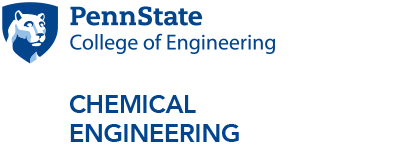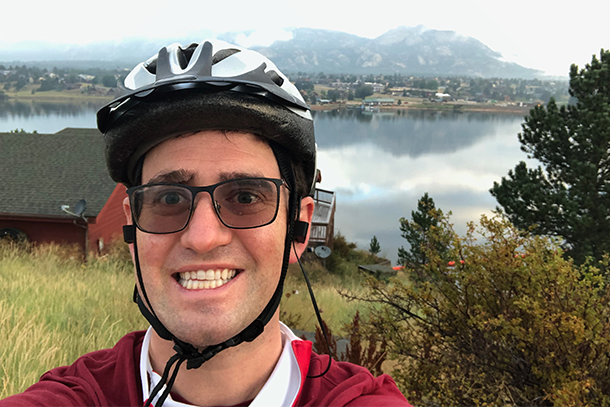Faculty Spotlight Archive
Seong Kim
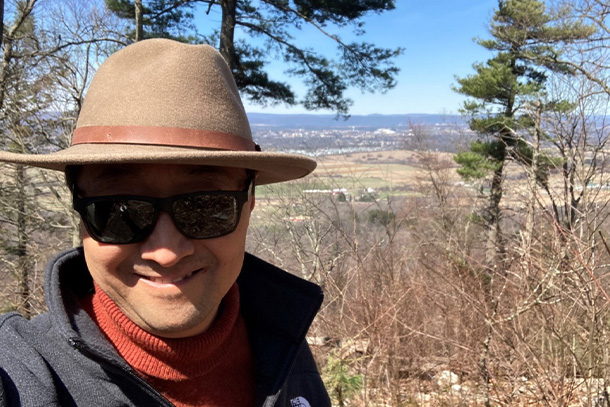
Tell us a little bit about your background.
I am originally from Korea. After my M.S. studies and work in a national lab in Korea, I came to Northwestern for my Ph.D. studies in 1993. Then, I moved to Berkeley for my postdoc in 1998. After that, I came to Penn State as an assistant professor in 2001. Someone may have noticed that these three universities are all along the I-80 highway. One day, I hope to travel along the entirety of I-80, from the Atlantic coast to the Pacific coast. I liked doing research when I was in grad school, but I never dreamed of becoming a professor in the U.S. After getting my Ph.D., I wanted to go back to Korea. But around that time, the economy in east Asia had nearly collapsed. Korea received International Monetary Fund assistance in 1998; during that time, there were no job openings in the country. Luckily, there were a lot of faculty position openings at many universities, and my postdoc adviser suggested I try it. I did, and I got it. In that sense, my story is not that glorious. I was just lucky enough to find an alternative option when my first option faded off from the screen.
Why did you choose Penn State?
Among the various schools I interviewed, the faculty at Penn State gave me a warm welcome and collegial impression. I recall Kristen Fichthorn was the search committee chair; she greeted me at the airport. At that time, Hank Foley was the department head, and I was his first hire. He insisted the department needed experimentalists (like me). I remember having dinner at the Nittany Lion Inn with vibrant discussions with Ali Borhan and Wayne Curtis. Wayne could not make it to the individual meeting earlier that day due to snow, so he came to dinner to chat with me. They asked me what chemical engineering courses I could teach because my educational background was physical chemistry. I also remember Darrell Velegol shaking my hand very hard and meeting with Costas Maranas in his carpeted office next to the restroom in Fenske. After the interview, I felt so good about people, but I had a concern. The Fenske Lab, constructed in 1959, was not very impressive. But the pull by the faculty was greater than my concern about the building. Collegiality vs. physical space: I was tipped toward the collegiality, knowing that the physical space could be changed some day. In fact, I was the first one who moved out of Fenske, relocating my lab to the Millennium Science Complex in 2011.
What interests you about your research?
“Doing something that others cannot do.” That excites me. I often tell my students that I am not interested in getting 1% better than others because someone else will get 1% better than me tomorrow. I am not saying the research to improve efficiency is not important; I am saying that I do not like to be in that kind of competition. Instead, I’d like to focus on fundamental problems underlying engineering or natural systems that others have missed or could not solve. In that way, I am helping others to make today’s system 1% better tomorrow. My research in my early career had demonstrations of new synthesis of materials or better systems. Those activities since waned down, and my current research focuses mostly on why certain materials or systems work in specific ways — how others perceived the concept incorrectly and what is the right way of viewing and understanding material properties or system performances.
What is your favorite class to teach?
I have been teaching ChE 510: Surface Characterization of Materials for the past 10 years or so. The main reason that I like this class is because I learned the material better through teaching, especially when students asked questions that I had not considered. Some of the homework problems of this class became the foundation of some of our recent papers that dispelled widespread incorrect data interpretation in vibrational spectroscopy of glass materials. I acknowledged all the students who completed homework problems in this class in the feature article, published in Journal of American Ceramic Society in 2021. Based on this class, I am planning to write a textbook on materials characterization.
I also liked teaching ChE 480: Unit Operation Lab. This class was physically demanding since it was, and still is, the only experimental lab course of chemical engineering. In the semesters that I taught (often co-taught with Mechteld Hillsley), typically around 70 students enrolled, so it was a large class as a hands-on lab course and thus very challenging. Professor Hillsley and I made a lot of changes not only to the types of experiments that students do, but also to how the students experience interactions with TAs and professors. The part that I enjoyed the most is that I had a chance to talk to every single person in the lab through group discussions, troubleshooting and presentational Q&As. From that, I learned what concepts students are struggling with and why they are struggling, which was very helpful to improve my teaching overall.
Do you have any hobbies?
I like hiking nearby trails early in the morning on one of the weekend days and playing tennis in the morning with a friend on the other. The picture shown in this profile was taken at the Lion’s Valley Vista in the Musser Gap Trail with the view of Penn State in the background. I am not a good player with good skills; I self-learned over time. I just like to play on early weekend mornings. Gardening was my hobby, growing veggies that we’d eat and seeing my kids eating strawberries. But now I gave up. The bunny population in my neighborhood went up so much, they ruined my garden.
If you could have any superhero power, what power would you have and why?
Teleportation, because you see your family who are far away within a second.
Mike Janik, associate department head and professor

Briefly describe your path to being a professor at Penn State
I would probably have been voted “least likely to become a chemical engineering professor” in my undergraduate chemical engineering class. I spent a lot of time as an undergraduate student organizing intramural sports programs and being active in the political union. I produced a play and did poetry readings. Though most of my undergraduate classmates went on to Ph.D. programs, I took a job as a process engineer at Procter & Gamble at a plant that made Pampers baby wipes. I took graduate classes at night and started to find the thermodynamics, mathematics, and catalysis classes I took more interesting than in my day job. I also started to find the chances I had to teach in training activities at work especially satisfying. After three years in industry, I decided to return to school full-time and pursue a Ph.D. and a career as an academic.
Why did you choose Penn State?
I wanted a faculty job at a top research institution that would also value a dedication to teaching. Penn State chemical engineering had both a strong research program and a strong reputation in undergraduate education. I was also very impressed with the future colleagues in the department that I met during my interview, and those colleagues have since served as great mentors and collaborators. My wife was pregnant with our first son at the time we decided to move to Penn State, and I was also attracted by the school system and the plethora of activities for kids in the community.
What got you excited about your research?
I have always been conscious of our impact on the environment around us and concerned with how rapidly we are depleting natural resources. I have since recognized that our use of energy resources and environmental impact are closely related, and I am eager to work in research areas that can grow our progress towards a sustainable energy infrastructure. This interest is combined with my desire to understand phenomena at the most basic level — to ask the question “why?” until getting to the most fundamental explanation. This, combined with my interest in computational work, has led to a career using computational chemistry techniques based on quantum mechanics. I recall the first time I realized we could model chemical reactions based solely on the principles and equations describing how atoms interact, and I still get excited to see research students realize how various chemical concepts can all be connected to how the energy of an arrangement atoms changes as the atoms re-arrange along a reaction path.
What is your favorite part about teaching?
Being part of a student’s learning experience is satisfying in many aspects, making it hard to pinpoint my favorite part about teaching. I most enjoy the many chances to work with students in small groups, where I can watch their thought processes as they learn new concepts and solve complex problems. Office hours give me a great chance to impact students’ problem-solving processes and help them see the connections between different parts of a course. Working with research students over multiple years is especially satisfying, as we transition from initially training them in the new research area to them teaching me about what they are learning through each week’s research activities.
What do you like to do outside the classroom?
I remain involved in sports, as a participant, coach, and fan. Running gives me a good chance to disconnect from all the busyness of work and home life, and I usually get a run in four-to-five days a week. My two boys and I spend a lot of time at baseball fields. I have coached for the last nine years and am coaching a little league team with my younger son this spring. My older son has outgrown my coaching, as he is not playing varsity baseball for State High and participating in various baseball programs aimed at playing in college. I play for my church’s softball team. I’m a Yankees fan and watch most games while working on my laptop in the evenings, and I play fantasy baseball as well.
If you could have any superhero power, what power would you have and why?
Superspeed would be really cool. I’m always late for just about everything and behind on a long to-do list, so moving faster would be a big plus. I also enjoy traveling, so superspeed would help me to see even more of the world. It is already somewhat annoying how slow students walk around campus when I am trying to get somewhere, and the Pollock sidewalk traffic jams between classes might get even more perturbing if I had superspeed. But superspeed might mean they couldn’t tell that it was me when I am cutting in and out of them.
Gina Noh, assistant professor
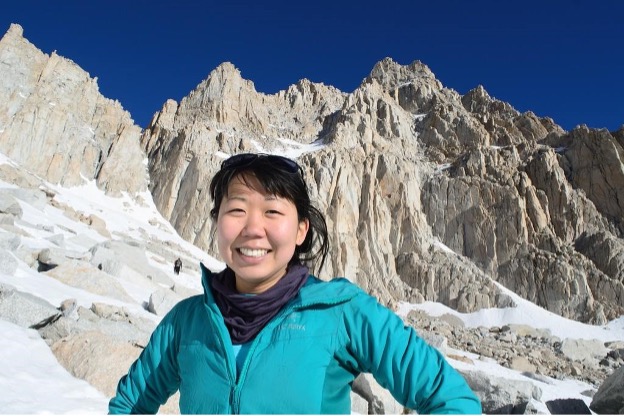
Tell us a little bit about your background?
I’m Korean American, born and raised in the U.S. I grew up in South Carolina, and I’ve lived in a few different places across the country and internationally—Boston, Berkeley and Zurich, to name the big ones—on my way to State College. I like to push my comfort zone and expose myself to a diversity of people, thoughts, and experiences. One of my new year’s resolutions for 2022 is to handwrite and mail letters to friends each month.
Why did you choose Penn State?
The best and most memorable experiences that I’ve had have always been the result of surrounding myself with excellent people. Coming to Penn State was an easy choice for me because of the great faculty, staff, and students, along with top-notch facilities.
What got you excited about your research?
I’ve always been excited about understanding how things work. My research focuses on understanding how catalysts work by interacting with molecules to increase rates of reaction, combining both chemical engineering and chemistry fundamentals. Today, I am working towards enabling sustainable and green solutions, and I am excited to see the impacts my research will have on mitigating climate change.
What is your favorite part about teaching?
I enjoy interacting with students, seeing their experiences brought to the table, and thinking about how I can relate course material to those experiences. Teaching feels the most rewarding when I see the light switch turn on in a student’s mind as they “get it.”
What do you like to do outside the classroom?
I cycle through a wide variety of interests, from the nourishing (cooking French or Korean food and baking goodies) to the calm (knitting, reading, and the occasional video game) to the very active (trail running, rock/ice climbing, mountaineering). One of my favorite things to do is travel to a new city and explore with a little running tour.
If you could have any superhero power, what power would you have and why?
It would be pretty cool to breathe underwater. It would be convenient for diving and underwater sightseeing, and I could finally improve my swimming.
Ezra Clark, assistant professor of chemical engineering
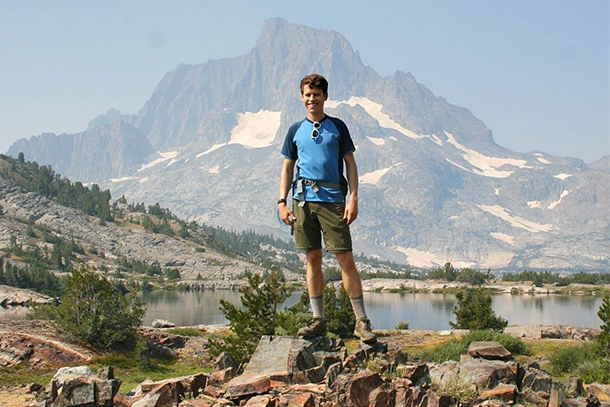
What inspired you to be a chemical engineer?
I left high school with a disdain for chemistry and a certainty that chemistry and chemical engineering were not in my future, so I began my undergraduate studies as a bioengineer with the ultimate goal of pursuing a career in medicine. However, I quickly realized that I was not particularly passionate about the medical profession and was primarily pursuing this career trajectory because it was the textbook definition of success. Thus began a journey of self-discovery and major swapping that ultimately landed me back in bioengineering a year later — but not a step closer to graduation. My undergraduate program required students to complete three co-op semesters, and it was time for me to embark on my first foray into the real world. However, I was not interested in x-ray machines or heart rate monitors. In fact, none of the co-op offerings sounded particularly exciting to me. I had a growing interest in environmental issues and renewable energy technologies, but there were no co-op opportunities aligned with these interests being offered by companies in the area. I spoke with one of the undergraduate career advisers, and they informed me that there was a co-op position available in an electrochemical energy conversion laboratory in the chemical engineering department. So, I walked over to the building that up to that point, I had never considered entering. I left an hour later with a co-op position and a new major. This one stuck.
Why did you choose Penn State?
I chose Penn State for a variety of reasons, both professional and personal. I have always had two competing visions of my life. On one hand, I wanted to pursue a career in renewable energy science, and on the other, I wanted to have a homestead and spend a significant amount of time out in nature. Penn State was one of the only universities where I felt like I could make both visions a reality. However, I also found a lot to like about the chemical engineering department. The department is home to several renown scientists with whom I share complementary research interests. I was also very impressed with the user facilities available at the Materials Research Institute.
What is your research about?
My research aims to develop electrocatalysts that enable electricity to drive chemical transformations. We identify the mechanisms of these transformations and the electrocatalyst properties that enable them to facilitate the chemistry, with the ultimate goal of leveraging this knowledge to design new electrocatalysts with superior activity and selectivity. To accomplish these goals, we utilize a combination of analytical and spectroscopic tools.
What do you like about interacting with students?
The infectious enthusiasm and desire to make the world a better place. Talking with students reminds me of the reasons I pursued this path in the first place. Helping students channel that motivation and enthusiasm to achieve their goals is a great feeling.
What do you like to do outside the classroom?
I have collected numerous hobbies over the years. I practice meditation on a daily basis. I am an avid outdoorsman and enjoy hiking and camping in equal measures. I enjoy working on and modifying cars, particularly Volkswagens. I also enjoy traveling and learning about other cultures.
If you could have any superhero power, what power would you have and why?
I would have Magneto’s control over electromagnetic fields because this would enable me to apply additional field stabilization to dipolar transition states on electrocatalytic surfaces, ultimately yielding superior electrocatalysts for processes like carbon dioxide reduction to hydrocarbons and alcohols. Who said superhero powers can’t help in the laboratory?
Stephanie Butler Velegol
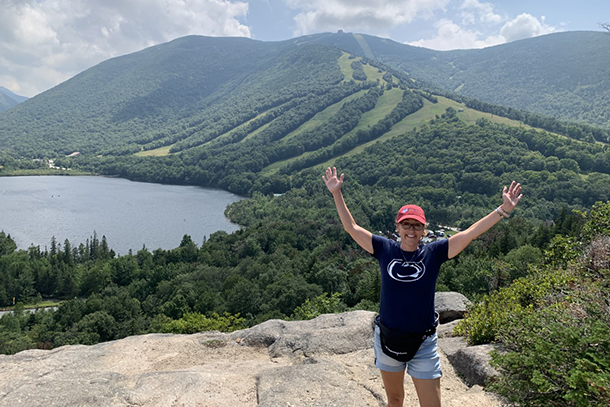
Tell us a little bit about your background.
I went to Drexel University for a chemical engineering degree, a five-year program with three rotations of co-ops. All those co-ops for me were at DuPont. Two were in Philadelphia, where we made automotive coding, and the final one was at the experimental station, which at that time, was where they did research and development. During my third co-op, I knew I wanted to pursue research in my career. I graduated and then attended Carnegie Mellon for my doctoral degree in chemical engineering. I worked on the co-absorption of polymers and surfactants on glass surfaces. I was there for four and a half years and graduated in 2000. I then came to Penn State in 2001, primarily because my husband was at Penn State. I taught in the chemical engineering department while also working with Bruce Logan, an environmental engineer in the Department of Civil and Environmental Engineering, to research bacterial adhesions and how the interactions caused bacteria to stick to surfaces. I did that for a year and then got a job at Bucknell University, teaching some courses there in the environmental area. I worked at Bucknell for a year and a half, and then in 2003, I took five years off to be with my two children. I returned to work in 2008 and started researching and teaching a course in civil and environmental engineering, in addition to becoming an adviser in the undergraduate program. I moved back to chemical engineering in 2017, where I became a full-time teaching associate professor.
Why did you choose Penn state?
I was what you would call a “trailing spouse.” My husband started working at Penn State in 1999, and we were apart until I moved here in 2000. I love being at a state school where we get students from all over the country and the world. Unlike private schools, we get such a variety of students, and we have some of the top students in the country. I love that we do not have a uniform type of student.
What interests you about your research?
I became involved in environmental research by accident. I had originally thought that environmental and safety were the same thing, but they are not. As I was teaching a water and waste class at Bucknell, I became confused as to why we have so many children dying from unclean water each year. I started thinking about what could be done, asking a lot of questions. I went to lunch with the pastor of my church, and he connected me with a professor in the plant and science department. This professor was studying the moringa tree, a tree that has seeds that clean water. That was my introduction to the plant that I have now been studying for eleven to thirteen years. My current research uses the seeds of the tree to clean water, based on my passion for using my skills to help the world.
What is your favorite part about teaching?
Seeing students grow — for example, seeing a student in CHE 210 who is nervous and crying and letting them know that I believe in them, eventually watching them grow and graduate and do amazing things. I am a witness to students in the most transformative times of their lives. I love to see students who overcome their challenges. I really do just enjoy getting to know students and seeing their transformation.
One of the things I like to do with them is “Inspirational Fridays.” I have personally related to many of our students at Penn State, who may feel a certain way for being a woman in engineering, having self-doubts, not feeling like the smartest person the room, etc. I am not on the tenure track. I know what it feels like for people to not respect what I am doing, deciding for myself to pursue what I want to do, regardless of what others think or value. This has not been an easy journey for me, and because of that, I am very empathetic to students who feel similarly. I like to remind students that everyone has their own path. If you are improving, that is all that matters. I also know from research that psychological barriers can really impact students' performance. I believe all students have the ability to succeed, but threatening feelings and anxiety have the ability to hinder their performance. I don’t want those things to get in their way, so I try my absolute best to encourage them to keep moving at their own pace. I see so many students focusing so much on grades they forget all the other skills that are so valuable to the world. It’s important for students to remember that during their time here.
If you could have any superpower, what would it be and why?
“Sometimes our superpower are things already inside of us that we just did not see before.”
Or, to fly so I could get to New York and Washington, D.C., faster!
If you could create/sell any Creamery ice cream, what would it be?
I love a sweet and salty combo, so I definitely want there to be pretzels, nuts, and chocolate. I would call it the salty swirl, or swirly squirrels to make it more Penn State-like (hence all the squirrels).
Ronald Danner, Professor Emeritus
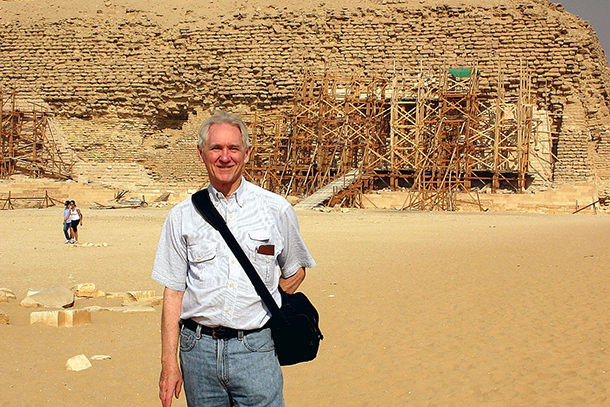
Tell us a little bit about your background.
I grew up in Lancaster County, Pennsylvania. My undergraduate and graduate degrees were obtained at Lehigh University in Bethlehem, Pennsylvania. During the summer of those years, I worked at a farm equipment company as a parts supplier, at a zinc smelter as an engineering assistant, at a chemical company as a lab technician and at a second chemical company as a data analyst. My first full-time job was at Eastman Kodak Company in Rochester, New York.
Briefly describe your path to being a professor at Penn State.
I saw an advertisement for a thermodynamics professor at Penn State. I applied and was fortunate to be accepted. Fifty-four years later, I am still there. My career at Penn State got off to a rather rocky start. During the interview, I was assured that I would be able to devote half my time to research. In those days the University was on the term system (essentially the quarter system). During my first year, I taught eight courses (six different ones!) totaling seventeen credits. I did not have time for much research! Fortunately, in the next few years things leveled out, and I was able to get heavily involved with research.
In the mid to late 1900s the Waltemeyer Department of Chemical Engineering was very heavily involved in practical research primarily supported by industry—lubrication, petroleum, polymers, catalysts, etc. Much of the work was done by employees, that is, people who were not students nor post-docs. They simply carried out assigned tasks.
What is your research about?
My initiation into research began when I worked the summer after my senior year at Air Products and Chemicals in Allentown, Pennsylvania. I returned to Lehigh and began my research on the adsorption of gases at cryogenic temperatures. Following my graduation, I worked at the Eastman Kodak Company in their research lab, attempting to find better photographic emulsions.
When I arrived at Penn State as an assistant professor, I returned to my initial research—the separation of gases by adsorption at low temperatures. A great advantage of carrying out research in an academic environment is that you are completely free to pursue mostly any topic if you can get support for it. I was able to obtain substantial support from the National Science Foundation. The department had long and productive interactions with the American Petroleum Institute producing the API Technical Data Book and the Manual for Predicting Chemical Process Design Data. Originally under the supervision of Merrell Fenske and Walter Braun, this work eventually became the responsibility of Thomas Daubert and me. This was an exciting time involving many interactions with the petroleum industry. In time it was recognized that a similar data project was needed for the petrochemical industry and, thus, was born the Data Compilation: Tables of Properties of Pure Compounds under the sponsorship of the Design Institute for Physical Property Data of the American Institute of Chemical Engineers. This effort was also under the supervision of Thomas Daubert and me. This effort led us to incorporate into our work some of the first available computer graphics software and the latest techniques in data analysis.
The study of the adsorption equilibria of gases on solids eventually branched out into analyzing diffusion in the micro and macropores of the materials. At that point one of the most fortuitous events of my research career occurred: J. Larry Duda suggested that similar techniques could be used to study diffusion in polymers. Thus, began a collaborative interaction that led to the formation of the Center for the Study of Polymer Solvent Systems and many years of polymer-based research.
In the course of this work, numerous graduate students, foreign visitors, post-docs, as well as full-time staff were involved. The interactions with these individuals both past and present is certainly the most rewarding part of my University career.
What is your favorite class to teach?
Teaching is too restrictive a word to describe what a University faculty member does. He or she certainly teaches, but also mentors, guides, leads by example, disciplines and much more. Out of it grows a mutual respect that can last a lifetime. I have taught practically every course in the ChE curriculum and enjoyed most all of them. However, my true love is teaching thermodynamics, both undergraduate and graduate. Although I knew little thermodynamics when I arrived at Penn State, I quickly found out that teaching it was the ideal way to learn it, and it became a real passion for me.
What do you like to do outside the classroom?
As an established professor, one has the benefit of extensive travel both in the United States and around the world for numerous conferences and workshops. In addition, there is the possibility of living in another country while on sabbatical leave, as I have done in Denmark and Germany. These experiences are some of the highlights of my career. Other activities that provided relief from my professional life were regular squash matches and scuba diving in numerous islands of the Caribbean and the Great Barrier Reef of Australia.
If you could have any superhero power, what power would you have and why?
If I could choose a superpower, it would be the ability to fly. Then I could see more of the world with no airport hassle.
Chris Arges, associate professor
What inspired you to be a chemical engineer?
My high school chemistry teachers made learning chemistry fun. The class covered theory, the history of chemistry, and labs. I enjoyed it all. I excelled at math and physics, but didn’t enjoy them as much as chemistry. Additionally, my chemistry teacher would play a lot of classic rock during the labs, and I learned all about the great rock artists from the mid-'60s to the early '80s. It was clear to me that chemical engineering would be a good fit based on my high school experiences before entering the University of Illinois at Urbana-Champaign (UIUC), as I could use my strengths in math and physics for chemistry.
The Mass Transfer Operations course at UIUC sealed the deal for me for pursuing a career in chemical engineering. I had an excellent professor for that course, Vinay Gupta (now at the University of South Florida), who showed my friends and me the power of mathematical modeling. I recall walking home with my Chem-E friends from the Grainger Engineering Library, debating if all the processes of the universe could be mathematically modeled, and having intense discussions around whether art could be modeled or not.
At UIUC, they encouraged us to get involved in undergraduate research in the Introduction to the Profession course. I did undergraduate research with a physical chemistry professor—Chris Bardeen (now at the University of California Riverside). My research project used ultra-fast laser spectroscopy to study electron transport and transfer processes in organic materials such as dendrimers and DNA. I worked for three years in Bardeen's lab. It was a lot of fun and got my name on two peer-reviewed publications. This was my first taste of academic work and really put me on the path to come back to school to get my doctorate after working four years in pharmaceutical R&D post-UIUC graduation.
Why did you choose Penn State?
Penn State is a first-rate research university with state-of-the-art user facilities and top-notch graduate students and professors. It is a completely immersive environment for academic inquiry. If I need to learn something about a field or topic that I have little knowledge about, there is a good chance someone at Penn State studies it and is an expert in it. Penn State is also surrounded by mountains and natural beauty. There are hundreds of trails to hike and explore. It is a nice place to live and work.
What interests you about your research?
To quote the Blues Brothers: “We’re on a mission from God.” This is my sentiment for my research in renewable energy systems, because arguably the greatest challenge facing society is climate disruption. The broader impacts of our work can lead to new knowledge and technologies that decarbonize our energy systems. My group primarily investigates how the composition and structure of polymer materials affect the performance, efficiency, and stability of electrochemical energy storage and conversion systems. These systems include fuel cells, water and carbon dioxide electrolysis units, and grid-scale batteries. Over the past few years, our knowledge in polymer science and electrochemical engineering has led to new research directions for addressing problems in securing water supplies, purifying organic acids from digested or fermented biomass, and recycling carbon dioxide waste.
What is your favorite class to teach?
This one is a tough one as I love electrochemical engineering, a tech elective I’ve taught several times, and unit operations laboratory, another class I have taught multiple times and that I enjoy as it involves hands-on work; but my choice is transport phenomena. I enjoy using math to model chemical processes and you get a lot of exposure to that in the Transport course. I knew I would survive as an assistant professor because my first assignment on day one was teaching heat and mass transfer four days a week to 160 students. When I teach transport, I like to incorporate numerical methods to solve problems. It is also one of the first courses where students learn how to make equations dimensionless.
What do you like to do outside of the classroom?
I have two young girls, so a lot of my free time is spent with them and my wife. They are involved in sports and hanging out with their friends. I have a road bike and a Peloton, which I like to use for exercise. My family and I like to travel and we make multiple trips a year to visit our extended family in Chicago and Puerto Rico. I also enjoy reading. The last book I read was Project Hail Mary by Andy Weir. I think it is his most creative book.
How would you sell Penn State Berkey Creamery ice cream on a cold Pennsylvania winter day?
I suppose this one is a tough one. My wife is Indian and she and her family like to cook spicy food. I like to have something sweet after a spicy meal. So, I suppose I would have the Creamery offer something spicy so a person would crave something sweet.
If you could have any superhero power, what power would you have and why?
I would like to have mind-reading and control capabilities like Professor X. I like the idea of having people that are in front of me (i.e., a line), or car traffic, to move out of my way so I am not inconvenienced. I enjoy watching Curb Your Enthusiasm with Larry David and there was an episode this year where he stated that he was too smart to wait in traffic. I sort of feel the same way.

